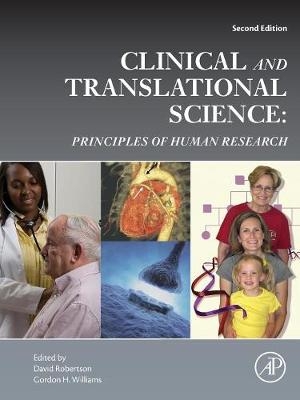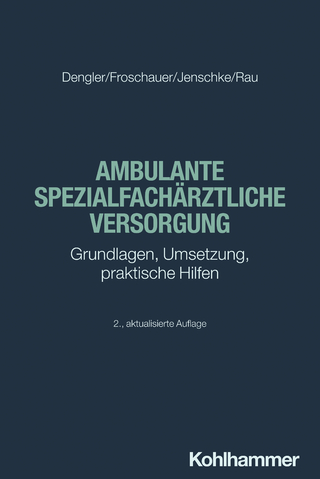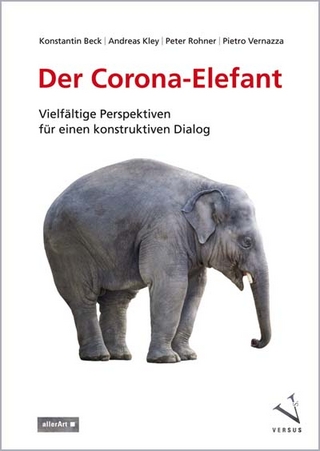
Clinical and Translational Science
Academic Press Inc (Verlag)
978-0-12-802101-9 (ISBN)
This updated second edition has been prepared with an international perspective, beginning with fundamental principles, experimental design, epidemiology, traditional and new biostatistical approaches, and investigative tools. It presents complete instruction and guidance from fundamental principles, approaches, and infrastructure, especially for human genetics and genomics, human pharmacology, research in special populations, the societal context of human research, and the future of human research. The book moves on to discuss legal, social, and ethical issues, and concludes with a discussion of future prospects, providing readers with a comprehensive view of this rapidly developing area of science.
Dr. Robertson graduated from Vanderbilt University in 1969, with a B.A. in Germanic and Slavic Languages. He attended the Arnamagnaen Institute in Copenhagen, Denmark before receiving his medical degree from Vanderbilt University Medical School in 1973. He went on to complete an internship and residency in Medicine at Johns Hopkins Hospital. Robertson was a postdoctoral fellow in Clinical Pharmacology at Vanderbilt for two years before accepting a position as assistant chief of Service in Medicine and instructor in Medicine at Johns Hopkins in 1977. In 1978, Robertson returned to Vanderbilt as assistant professor of Medicine and Pharmacology, became an associate professor in 1982, then rose to professor in 1986. He spent one year as a visiting professor in the Department of Molecular Endocrinology at National, then served as a visiting professor in the Department of Anatomy and Embryology at University College in London. In 1993, Robertson became director of the Medical Scientist Training Program at Vanderbilt University and also took the position of director of the Division of Movement Disorders in the Department of Neurology, which he held until 2000. Along with his current roles as professor of Medicine and Pharmacology and professor of Neurology, Robertson is currently the Elton Yates Professor of Autonomic Disorders, director of the General Clinical Research Center and director of the Center for Space Physiology and Medicine for Vanderbilt University. Robertson currently serves on the Board of Advisors for the World Life Foundation, the NASA Microgravity Human Research Committee, the Merck Advisory Board, and the editorial boards of American Journal of Medicine, Autonomic Neuroscience and Clinical Autnomic Research. He is also associate editor for the Journal of Pharmacology and Experimental Therapeutics. Dr. Williams’ group’s first major goal is the identification of the genetic underpinnings of endocrine factors related to cardiovascular (CV) risk in hypertension and diabetes with the ultimate goal of using genetic markers to develop individualized, personal treatment programs for patients with these diseases. His is a translational research group with interdisciplinary focus in humans and at the bench. The group's major focus in human studies is on careful phenotyping of patients with hypertension and diabetes relative to cardiovascular risk factors. The research focuses on evaluating hormones that can modify vascular contractility and/or salt handling. The major current thrusts are the renin-angiotensin-aldosterone system (RAAS), kallikrein, cortisol, adducin, the beta-2 adrenergic receptor and ion transport systems. The second major goal is to determine the role of aldosterone in producing CV disease at molecular, cellular, organ, whole animal and clinical levels. Recent studies suggest that aldosterone has a wide range of effects including inducing microvascular ischemia, thrombosis, fibrosis, and inflammatory responses many of them potentially mediated by aldosterone’s interaction with caveolins and two recently discovered proteins---striatin and lysine specific demethylase 1 (LSD1). Techniques employed include whole animal physiological studies using normal animals, those made hypertensive and those genetically modified (e.g. knock-outs and transgenics). Molecular and cellular techniques include gene arrays using chip technology, proteomics, confocal microscopy, electrophysiology and in situ hybridization. Finally, the group has just begin the first proof of concept clinical trial for using genetic information to provide personalized medicine.
Section I. Fundamental Principles 1. Introduction to Clinical Research 2. Patient-Oriented Research 3. Clinical Trials 4. Introduction to Epidemiology 5. The Patient-Centered Outcomes Research Institute: Current Approach to Funding Clinical Research and Future Directions 6. Health-Care Technology Assessment (HTA) 7. Health Services Research: Translating Discovery and Research Into Practice and Policy
Section II. Approaches 8. Measurement of Biological Materials 9. Imaging Tools in Clinical Research: Focus on Imaging Technologies 10. Imaging Tools in Human Research: Focus on Image-Guided Intervention 11. Nanotechnology in Clinical and Translational Research 12. The Use of Questionnaires and Surveys 13. Information Technology 14. Principles of Biostatistics 15. Good Clinical Practice and Good Laboratory Practice
Section III. Human Genetics 16. Introduction to Human Genetics 17. Epidemiologic and Population Genetic Studies 18. Pharmacogenetics of Drug Metabolism 19. Statistical Techniques for Genetic Analysis
Section IV. Human Pharmacology 20. Introduction to Clinical Pharmacology 21. Adverse Drug Events
Section V. Societal Context of Human Research 22. Translating Science to the Bedside: The Innovation Pipeline 23. Regulatory Environment 24. Ethical Issues in Translational Research and Clinical Investigation 25. Clinical Research in the Public Eye
Section VI. Research in Special Populations 26. Research in Special Populations: Acute Illnesses; Critical Care; and Surgical Patients 27. Research in the Emergency Care Environment 28. Psychiatric Disorders 29. Research in Special Populations: Geriatrics 30. Clinical Research in Neurology 31. Research in Pediatrics 32. Cancer as a Paradigm for Translational and Clinical Biomedical Research 33. Maintaining an Emphasis on Rare Diseases With Research Initiatives and Resources at the National Center for Advancing Translational Sciences
Section VII. Infrastructure 34. Clinical and Translational Science Infrastructure
Section VIII. Education, Training and Career Choices 35. Education, Training and Career Choices: Training Basic, Clinical, and Translational Investigators 36. A Stepwise Approach to a Career in Translational Research 37. Physician Careers in the Pharmaceutical Industry
Section IX. Research in Academia 38. Industry-Sponsored Clinical Research in Academia 39. Governmental Support of Research 40. The Role of Nonprofit, Nongovernmental Funding in Support of Biomedical Research 41. Modern Drug Discovery and Development 42. Pharmaceutical and Biotechnology Sector Support of Research
Section X. Prospectus 43. The Future of Clinical Research
| Erscheinungsdatum | 27.12.2016 |
|---|---|
| Verlagsort | San Diego |
| Sprache | englisch |
| Maße | 216 x 276 mm |
| Gewicht | 2200 g |
| Themenwelt | Medizin / Pharmazie ► Gesundheitswesen |
| Naturwissenschaften ► Biologie | |
| ISBN-10 | 0-12-802101-2 / 0128021012 |
| ISBN-13 | 978-0-12-802101-9 / 9780128021019 |
| Zustand | Neuware |
| Haben Sie eine Frage zum Produkt? |
aus dem Bereich


